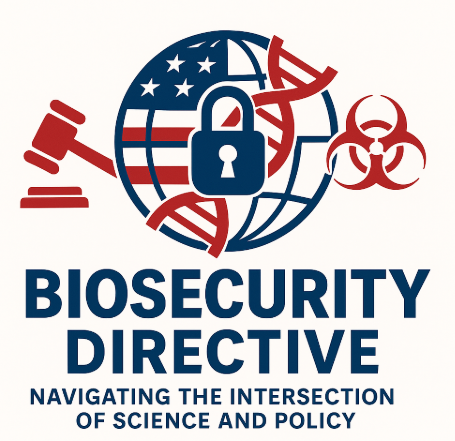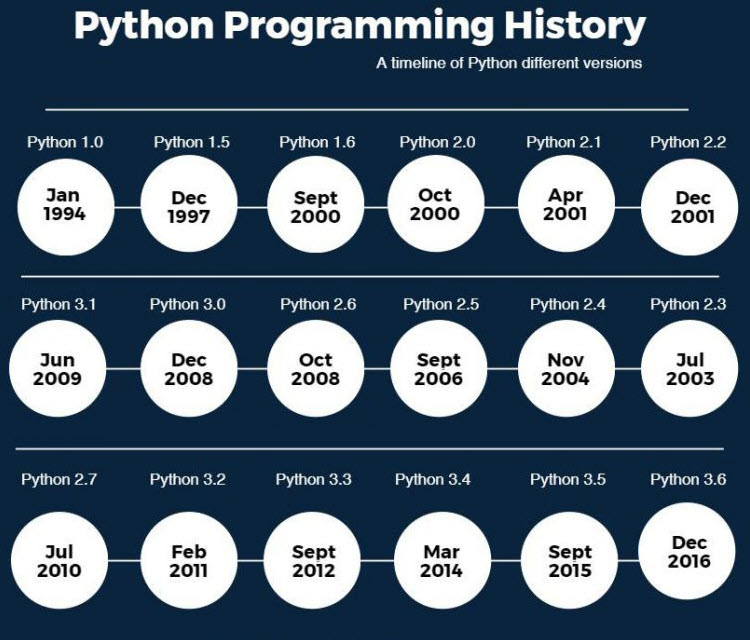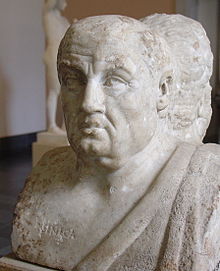Understanding Gain-of-Function Research: Implications of Trump’s 2025 Executive Order
In a decisive move aimed at preventing future pandemics, President Donald Trump signed an executive order on May 5, 2025, significantly restricting federal funding for gain-of-function research. This controversial field of scientific study, which has gained heightened public attention since the COVID-19 pandemic, involves the deliberate enhancement of pathogens to increase their transmissibility, virulence, or host range – ostensibly to better understand and prepare for potential pandemic threats. The executive order specifically targets research conducted in “countries of concern” such as China and Iran, as well as other nations deemed to have insufficient research oversight mechanisms. This comprehensive policy shift represents the culmination of over a decade of debate within scientific and policy communities about the appropriate balance between scientific advancement and biological security, particularly following speculation about the origins of SARS-CoV-2 and whether gain-of-function research played a role in the pandemic that transformed global society beginning in 2020.
The scientific community has long been divided on the merits and risks of gain-of-function research, with proponents arguing that such studies provide crucial insights into how viruses might evolve naturally and help prepare countermeasures before dangerous variants emerge in the wild. According to the National Institutes of Health (NIH), gain-of-function approaches have historically been employed to develop vaccines, understand pathogen biology, and enhance preparedness for emerging infectious diseases. The field encompasses a broad range of techniques, including serial passaging of microorganisms to increase transmissibility or virulence, genetic manipulation to introduce specific mutations, and experiments designed to test how pathogens might adapt to new hosts or environments. These methods have been applied to various pathogens including influenza viruses, coronaviruses like SARS and MERS, and other potential pandemic agents – often with the stated goal of developing better surveillance systems, diagnostics, vaccines, and therapeutics that could mitigate future outbreaks and save countless lives in the event of natural pathogen emergence.
Critics of gain-of-function research, however, have consistently raised alarms about the potential catastrophic consequences of laboratory accidents or intentional misuse of enhanced pathogens. The debate intensified significantly in 2011 when researchers at the University of Wisconsin and Erasmus University Medical Center conducted controversial experiments that enhanced the transmissibility of H5N1 avian influenza between ferrets – experiments that demonstrated the theoretical possibility of creating airborne versions of a virus with a human mortality rate exceeding 50%. These studies prompted the Obama administration to implement a funding pause on certain gain-of-function research in 2014, following several high-profile laboratory biosafety incidents involving anthrax, smallpox, and H5N1 at government facilities. This pause remained in effect until December 2017, when the NIH lifted the moratorium and implemented the Potential Pandemic Pathogen Care and Oversight (P3CO) Framework to provide additional oversight for federally funded research that might create enhanced potential pandemic pathogens. Despite these measures, critics continued to argue that oversight remained insufficient and that the risks of laboratory-enhanced pathogens escaping containment far outweighed the potential benefits of such research.
The COVID-19 pandemic dramatically reshaped the conversation around gain-of-function research, particularly as questions emerged about the origins of SARS-CoV-2. While many scientists maintain that the virus most likely emerged through natural zoonotic spillover, possibly at the Huanan Seafood Market in Wuhan, China, others have pointed to circumstantial evidence supporting the possibility of a laboratory origin connected to coronavirus research at the Wuhan Institute of Virology. The institute had received some funding through NIH grants to the EcoHealth Alliance for studies involving bat coronaviruses, though officials have disputed whether this work technically constituted gain-of-function research under existing definitions. The controversy sparked heated congressional hearings, with exchanges between Senator Rand Paul and Dr. Anthony Fauci highlighting the ambiguity in how gain-of-function research is defined and regulated. Intelligence agencies have released assessments with varying degrees of confidence regarding the pandemic’s origins, with none reaching definitive conclusions, further complicating the policy landscape and contributing to the polarized nature of the debate spanning scientific, political, and public health domains.
Trump’s executive order represents the most aggressive federal action to date in restricting gain-of-function research, going beyond previous administrations’ approaches by immediately halting funding for such experiments in countries deemed to have insufficient oversight. The order defines “dangerous gain-of-function research” broadly as work on infectious agents or toxins that could enhance their pathogenicity or transmissibility, potentially increasing the risk of causing a pandemic. Beyond the international restrictions, the order also pauses federally funded research involving dangerous pathogens and toxins within the United States until a new, safer, and more transparent policy is developed – giving the Office of Science and Technology Policy and the National Security Advisor 120 days to work with agencies to create comprehensive oversight frameworks. Additionally, the order empowers federal agencies to identify and terminate funding for any biological research that could pose threats to public health, safety, or national security, and introduces significant penalties for researchers who violate these policies, including potential five-year debarment from receiving federal life-sciences grants.
Supporters of the executive order, including HHS Secretary Robert F. Kennedy Jr. and FDA Commissioner Dr. Marty Makary, have framed it as an essential step in preventing future pandemics potentially caused by laboratory accidents. During the signing ceremony, Kennedy specifically stated that “in all of the history of gain-of-function research, we cannot point to a single good thing that has come of it,” reflecting the administration’s skepticism about the value of such experiments relative to their potential risks. The White House fact sheet accompanying the order emphasized that these measures would “drastically reduce the potential for lab-related incidents” while protecting Americans from dangerous research. The administration has explicitly connected the policy to concerns about research conducted on bat coronaviruses by EcoHealth Alliance and the Wuhan Institute of Virology, suggesting that the COVID-19 pandemic might have resulted from gain-of-function experiments gone awry – though this remains a contested hypothesis within the scientific community and among intelligence agencies that have investigated the pandemic’s origins.
Critics of the executive order, including some prominent scientists and public health experts, have expressed concern that the broad definition of gain-of-function research could inadvertently impede legitimate scientific work necessary for pandemic preparedness. Lawrence Gostin, a distinguished professor at Georgetown University, characterized the order as “political theater” rather than a serious plan to strengthen preparedness for future pandemics, arguing that it could hamper international scientific collaboration critical for understanding and combating emerging infectious diseases. Immunologist Gigi Gronvall from Johns Hopkins Bloomberg School of Public Health has warned that restricting such research might leave the United States less prepared to identify and respond to viral threats, noting that “people can bury their heads in the sand, but there are lots of viral threats out there, and you’re not going to be able to solve that threat without understanding viruses.” These concerns highlight the delicate balance policymakers must navigate between mitigating biosafety risks and maintaining scientific capabilities necessary for public health security in an increasingly interconnected global environment where natural pandemic threats remain ever-present.
The executive order also raises significant questions about international scientific cooperation and the future of global pandemic preparedness efforts. By specifically targeting countries like China and Iran, the policy may further strain already tense diplomatic relations and potentially accelerate the fragmentation of international scientific collaboration. Historically, understanding emerging infectious diseases has benefited from multinational research partnerships, allowing scientists to track pathogen evolution across borders and develop coordinated response strategies. Critics worry that restricting such collaboration could create knowledge gaps that ultimately leave the global community more vulnerable to natural pandemic threats. At the same time, supporters argue that the risks of unregulated or under-regulated research in certain countries outweigh the benefits of unfettered scientific exchange, particularly when dealing with potentially pandemic pathogens. The executive order attempts to address this tension by focusing restrictions on countries with perceived insufficient oversight while maintaining the possibility of appropriate research under enhanced domestic supervision, though whether this balance will prove effective remains an open question requiring careful monitoring and potential adjustment as implementation proceeds.
Looking forward, the implications of this executive order extend beyond immediate research funding decisions to broader questions about scientific governance, global health security, and the appropriate role of government in managing dual-use research. The administration has tasked officials with developing a comprehensive strategy to oversee privately funded gain-of-function research within the United States, acknowledging that federal funding restrictions alone cannot address all potential biosafety and biosecurity concerns. This approach signals a more holistic view of biological risk management that encompasses both public and private research activities. Meanwhile, the scientific community faces the challenge of adapting to these new constraints while continuing vital work on infectious disease preparedness. Some researchers may shift their focus to alternative approaches for studying pathogen evolution and pandemic potential that don’t fall under the gain-of-function designation, potentially spurring methodological innovation. Others may advocate for refinements to the policy that would provide clearer distinctions between high-risk and acceptable research practices, building on previous frameworks like the P3CO while addressing their perceived shortcomings in enforcement and transparency.
The debate surrounding gain-of-function research and President Trump’s executive order ultimately reflects fundamental tensions between scientific freedom, national security, and public health protection that will continue to shape biotechnology governance for years to come. While the COVID-19 pandemic has understandably heightened concerns about potential laboratory origins of devastating outbreaks, it has also demonstrated the critical importance of robust scientific capabilities for responding to infectious disease emergencies, regardless of their source. As implementation of the executive order proceeds, policymakers, scientists, and public health experts will need to maintain ongoing dialogue about how best to balance innovation and caution in biological research. The goal should be developing oversight systems that effectively minimize catastrophic risks while preserving the scientific capabilities necessary to protect against the full spectrum of biological threats, both natural and anthropogenic. This challenge transcends partisan politics and requires thoughtful consideration of complex scientific, ethical, and security dimensions to craft approaches that genuinely enhance global health security in an increasingly complex technological landscape where both the promises and perils of advanced biological research continue to expand.In a decisive move aimed at preventing future pandemics, President Donald Trump signed an executive order on May 5, 2025, significantly restricting federal funding for gain-of-function research. This controversial field of scientific study, which has gained heightened public attention since the COVID-19 pandemic, involves the deliberate enhancement of pathogens to increase their transmissibility, virulence, or host range – ostensibly to better understand and prepare for potential pandemic threats. The executive order specifically targets research conducted in “countries of concern” such as China and Iran, as well as other nations deemed to have insufficient research oversight mechanisms. This comprehensive policy shift represents the culmination of over a decade of debate within scientific and policy communities about the appropriate balance between scientific advancement and biological security, particularly following speculation about the origins of SARS-CoV-2 and whether gain-of-function research played a role in the pandemic that transformed global society beginning in 2020.
The scientific community has long been divided on the merits and risks of gain-of-function research, with proponents arguing that such studies provide crucial insights into how viruses might evolve naturally and help prepare countermeasures before dangerous variants emerge in the wild. According to the National Institutes of Health (NIH), gain-of-function approaches have historically been employed to develop vaccines, understand pathogen biology, and enhance preparedness for emerging infectious diseases. The field encompasses a broad range of techniques, including serial passaging of microorganisms to increase transmissibility or virulence, genetic manipulation to introduce specific mutations, and experiments designed to test how pathogens might adapt to new hosts or environments. These methods have been applied to various pathogens including influenza viruses, coronaviruses like SARS and MERS, and other potential pandemic agents – often with the stated goal of developing better surveillance systems, diagnostics, vaccines, and therapeutics that could mitigate future outbreaks and save countless lives in the event of natural pathogen emergence.
Critics of gain-of-function research, however, have consistently raised alarms about the potential catastrophic consequences of laboratory accidents or intentional misuse of enhanced pathogens. The debate intensified significantly in 2011 when researchers at the University of Wisconsin and Erasmus University Medical Center conducted controversial experiments that enhanced the transmissibility of H5N1 avian influenza between ferrets – experiments that demonstrated the theoretical possibility of creating airborne versions of a virus with a human mortality rate exceeding 50%. These studies prompted the Obama administration to implement a funding pause on certain gain-of-function research in 2014, following several high-profile laboratory biosafety incidents involving anthrax, smallpox, and H5N1 at government facilities. This pause remained in effect until December 2017, when the NIH lifted the moratorium and implemented the Potential Pandemic Pathogen Care and Oversight (P3CO) Framework to provide additional oversight for federally funded research that might create enhanced potential pandemic pathogens. Despite these measures, critics continued to argue that oversight remained insufficient and that the risks of laboratory-enhanced pathogens escaping containment far outweighed the potential benefits of such research.
The COVID-19 pandemic dramatically reshaped the conversation around gain-of-function research, particularly as questions emerged about the origins of SARS-CoV-2. While many scientists maintain that the virus most likely emerged through natural zoonotic spillover, possibly at the Huanan Seafood Market in Wuhan, China, others have pointed to circumstantial evidence supporting the possibility of a laboratory origin connected to coronavirus research at the Wuhan Institute of Virology. The institute had received some funding through NIH grants to the EcoHealth Alliance for studies involving bat coronaviruses, though officials have disputed whether this work technically constituted gain-of-function research under existing definitions. The controversy sparked heated congressional hearings, with exchanges between Senator Rand Paul and Dr. Anthony Fauci highlighting the ambiguity in how gain-of-function research is defined and regulated. Intelligence agencies have released assessments with varying degrees of confidence regarding the pandemic’s origins, with none reaching definitive conclusions, further complicating the policy landscape and contributing to the polarized nature of the debate spanning scientific, political, and public health domains.
Trump’s executive order represents the most aggressive federal action to date in restricting gain-of-function research, going beyond previous administrations’ approaches by immediately halting funding for such experiments in countries deemed to have insufficient oversight. The order defines “dangerous gain-of-function research” broadly as work on infectious agents or toxins that could enhance their pathogenicity or transmissibility, potentially increasing the risk of causing a pandemic. Beyond the international restrictions, the order also pauses federally funded research involving dangerous pathogens and toxins within the United States until a new, safer, and more transparent policy is developed – giving the Office of Science and Technology Policy and the National Security Advisor 120 days to work with agencies to create comprehensive oversight frameworks. Additionally, the order empowers federal agencies to identify and terminate funding for any biological research that could pose threats to public health, safety, or national security, and introduces significant penalties for researchers who violate these policies, including potential five-year debarment from receiving federal life-sciences grants.
Supporters of the executive order, including HHS Secretary Robert F. Kennedy Jr. and FDA Commissioner Dr. Marty Makary, have framed it as an essential step in preventing future pandemics potentially caused by laboratory accidents. During the signing ceremony, Kennedy specifically stated that “in all of the history of gain-of-function research, we cannot point to a single good thing that has come of it,” reflecting the administration’s skepticism about the value of such experiments relative to their potential risks. The White House fact sheet accompanying the order emphasized that these measures would “drastically reduce the potential for lab-related incidents” while protecting Americans from dangerous research. The administration has explicitly connected the policy to concerns about research conducted on bat coronaviruses by EcoHealth Alliance and the Wuhan Institute of Virology, suggesting that the COVID-19 pandemic might have resulted from gain-of-function experiments gone awry – though this remains a contested hypothesis within the scientific community and among intelligence agencies that have investigated the pandemic’s origins.
Critics of the executive order, including some prominent scientists and public health experts, have expressed concern that the broad definition of gain-of-function research could inadvertently impede legitimate scientific work necessary for pandemic preparedness. Lawrence Gostin, a distinguished professor at Georgetown University, characterized the order as “political theater” rather than a serious plan to strengthen preparedness for future pandemics, arguing that it could hamper international scientific collaboration critical for understanding and combating emerging infectious diseases. Immunologist Gigi Gronvall from Johns Hopkins Bloomberg School of Public Health has warned that restricting such research might leave the United States less prepared to identify and respond to viral threats, noting that “people can bury their heads in the sand, but there are lots of viral threats out there, and you’re not going to be able to solve that threat without understanding viruses.” These concerns highlight the delicate balance policymakers must navigate between mitigating biosafety risks and maintaining scientific capabilities necessary for public health security in an increasingly interconnected global environment where natural pandemic threats remain ever-present.
The executive order also raises significant questions about international scientific cooperation and the future of global pandemic preparedness efforts. By specifically targeting countries like China and Iran, the policy may further strain already tense diplomatic relations and potentially accelerate the fragmentation of international scientific collaboration. Historically, understanding emerging infectious diseases has benefited from multinational research partnerships, allowing scientists to track pathogen evolution across borders and develop coordinated response strategies. Critics worry that restricting such collaboration could create knowledge gaps that ultimately leave the global community more vulnerable to natural pandemic threats. At the same time, supporters argue that the risks of unregulated or under-regulated research in certain countries outweigh the benefits of unfettered scientific exchange, particularly when dealing with potentially pandemic pathogens. The executive order attempts to address this tension by focusing restrictions on countries with perceived insufficient oversight while maintaining the possibility of appropriate research under enhanced domestic supervision, though whether this balance will prove effective remains an open question requiring careful monitoring and potential adjustment as implementation proceeds.
Looking forward, the implications of this executive order extend beyond immediate research funding decisions to broader questions about scientific governance, global health security, and the appropriate role of government in managing dual-use research. The administration has tasked officials with developing a comprehensive strategy to oversee privately funded gain-of-function research within the United States, acknowledging that federal funding restrictions alone cannot address all potential biosafety and biosecurity concerns. This approach signals a more holistic view of biological risk management that encompasses both public and private research activities. Meanwhile, the scientific community faces the challenge of adapting to these new constraints while continuing vital work on infectious disease preparedness. Some researchers may shift their focus to alternative approaches for studying pathogen evolution and pandemic potential that don’t fall under the gain-of-function designation, potentially spurring methodological innovation. Others may advocate for refinements to the policy that would provide clearer distinctions between high-risk and acceptable research practices, building on previous frameworks like the P3CO while addressing their perceived shortcomings in enforcement and transparency.
The debate surrounding gain-of-function research and President Trump’s executive order ultimately reflects fundamental tensions between scientific freedom, national security, and public health protection that will continue to shape biotechnology governance for years to come. While the COVID-19 pandemic has understandably heightened concerns about potential laboratory origins of devastating outbreaks, it has also demonstrated the critical importance of robust scientific capabilities for responding to infectious disease emergencies, regardless of their source. As implementation of the executive order proceeds, policymakers, scientists, and public health experts will need to maintain ongoing dialogue about how best to balance innovation and caution in biological research. The goal should be developing oversight systems that effectively minimize catastrophic risks while preserving the scientific capabilities necessary to protect against the full spectrum of biological threats, both natural and anthropogenic. This challenge transcends partisan politics and requires thoughtful consideration of complex scientific, ethical, and security dimensions to craft approaches that genuinely enhance global health security in an increasingly complex technological landscape where both the promises and perils of advanced biological research continue to expand.





